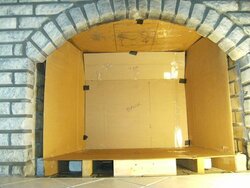Boy does it increase the heat output and allows me to damper the stove down more. I am getting 50-100 degrees more on top of my insert shelf and heat is coming from around the surround. If I had to guess I would bet that I get 25-50 percent more heat with the increase in temp... I have been running the fan on low so I will post when it gets really cold and I run it on high. 36 degrees last night so its not a true 0 degree test



